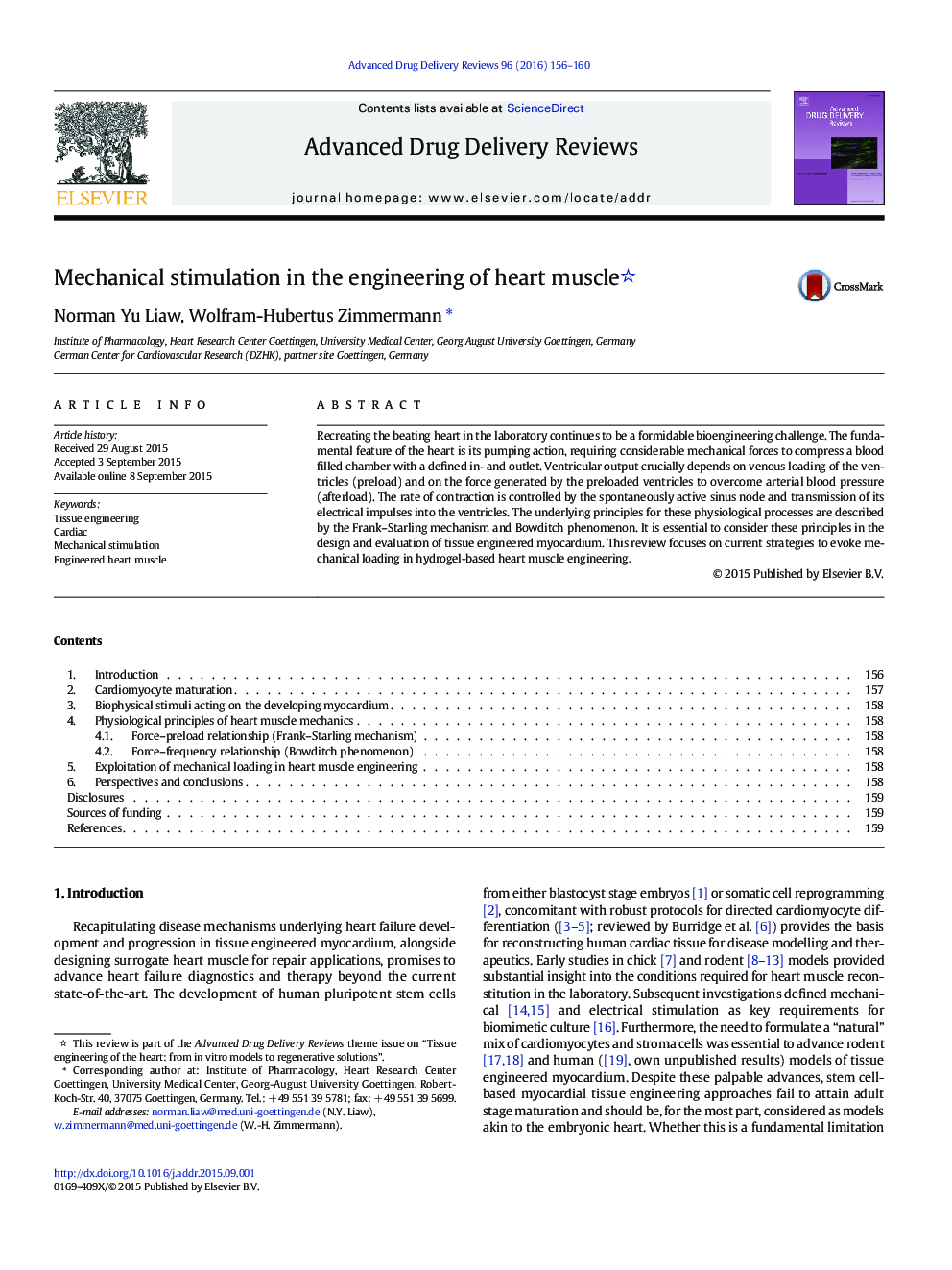| Article ID | Journal | Published Year | Pages | File Type |
|---|---|---|---|---|
| 2070802 | Advanced Drug Delivery Reviews | 2016 | 5 Pages |
Recreating the beating heart in the laboratory continues to be a formidable bioengineering challenge. The fundamental feature of the heart is its pumping action, requiring considerable mechanical forces to compress a blood filled chamber with a defined in- and outlet. Ventricular output crucially depends on venous loading of the ventricles (preload) and on the force generated by the preloaded ventricles to overcome arterial blood pressure (afterload). The rate of contraction is controlled by the spontaneously active sinus node and transmission of its electrical impulses into the ventricles. The underlying principles for these physiological processes are described by the Frank–Starling mechanism and Bowditch phenomenon. It is essential to consider these principles in the design and evaluation of tissue engineered myocardium. This review focuses on current strategies to evoke mechanical loading in hydrogel-based heart muscle engineering.
Graphical abstractFigure optionsDownload full-size imageDownload high-quality image (145 K)Download as PowerPoint slide
